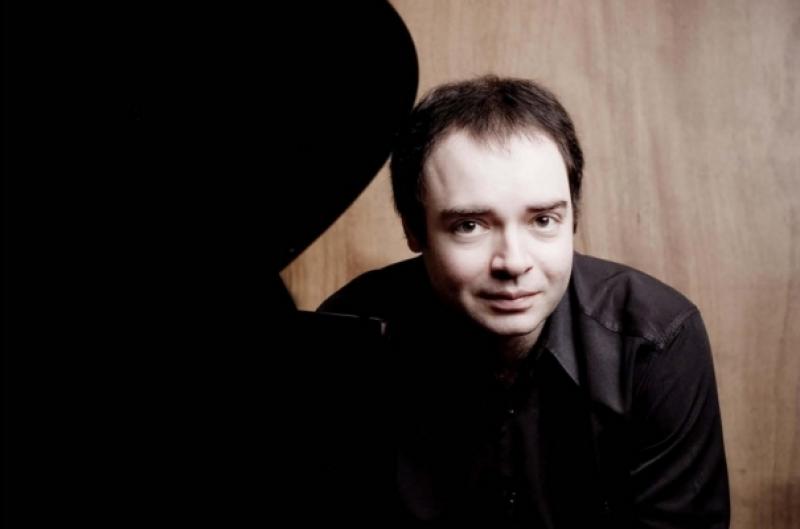Weinberg's Quintet is one of his very best works. Hear the composer himself performing with the Borodin Quartet in this classic recording:
Details for the concert and tickets can be found here.
As a preview, here's my programme note for the concert:
As a preview, here's my programme note for the concert:
Mieczysław Weinberg (1919-1996)Piano Quintet, Op. 18 (1944)I – Moderato con motoII – AndanteIII – PrestoIV – LargoV – Allegro agitatoWeinberg wrote his Piano Quintet between August and October 1944, at the age of 24. Barely a year after settling in Moscow, following his double escape from Nazi invasion (Warsaw to Minsk in September 1939 and Minsk to Tashkent in June 1941), he already had a blossoming reputation in the musical community of the Soviet capital. His Quintet is part of a larger group of chamber pieces written at prolific speed during the war years. Despite his youth, it is a formidable work, cast in five movements, similar to Shostakovich’s celebrated Piano Quintet of 1940. But whereas Shostakovich’s work is often contemplative in character, Weinberg’s Quintet is more extrovert as a whole. It is tempting to link the work’s serious tone to the war itself - Weinberg had left his family behind when he fled his native Poland – but unlike some of his later pieces, there are no concrete clues to this effect, such as quotations or self-quotations from songs. The piano part is particularly demanding, with several extended solos. A remarkable recording exists of the composer performing the piece with the Borodin Quartet – testament to his pianistic proficiency.The work’s opening phrase is immediately striking, with an austere tone that sets the mood for the first movement and the whole piece. The piano is pitted against the strings, with the quartet providing punctuating gestures to the piano’s weightier thematic statements. The dotted rhythm of the second theme allows the strings to dominate, but only briefly before the opening theme returns in a thunderous restatement.The second movement alternates a sinuous theme in the muted strings with a hectic solo from the piano. The latter’s triplet figurations rapidly expand to the whole ensemble, before reducing to a skeletal macabre texture, with the strings playing several eerie passages with the back of the bow – col legno.The third movement is a Presto that opens with muted flurries in the strings, soon joined by octaves high in the piano that create a feeling of tense expectation. This mood is shattered by a series of strenuous scales and trills, before a central dance section in which elements reminiscent of Klezmer and even a brief Chopin-esque passage for solo piano combine to emphasise the ‘cabaret’ feel already latent in the previous movement.The long-drawn Largo rapidly darkens the mood, providing a sobering contrast to the previous manic jubilation; its character is stark, verging on melancholic. A line of implacable octaves sets the tone. The first violin delivers a mournful solo, before a strident burst of major tonality in the piano. Energy accumulates, before a heart-rending flurry of passion. The quasi-recitative theme once again moves to the solo piano, before a morendo close. A contemporary reviewer described this movement as ‘disturbingly lyrical and deeply meditative’.With such contrasts already encountered, the final movement has several questions to address, which is does with a succession of strongly characterised themes. It opens with strident, almost machine-like pulsations, with aggressive interjections from the piano. Syncopated rhythms abound. The second theme is unexpected: firmly in the major, it presents a folk-like dance, playful and mischievous, like an east-European take on an Irish jig. The piano contrasts with a jazz-like canon, before the first violin reintroduces the opening movement’s first theme, taking up a thread that serves to unite the whole work. This is soon combined with the folk-like melody in an unsettling blend. The juxtaposition builds to become more jarring before a fiery restatement of the first movement theme in full. Energy dissipates for the work’s close, softly concluding in a troublingly inconclusive F major.Daniel Elphick


No comments:
Post a Comment